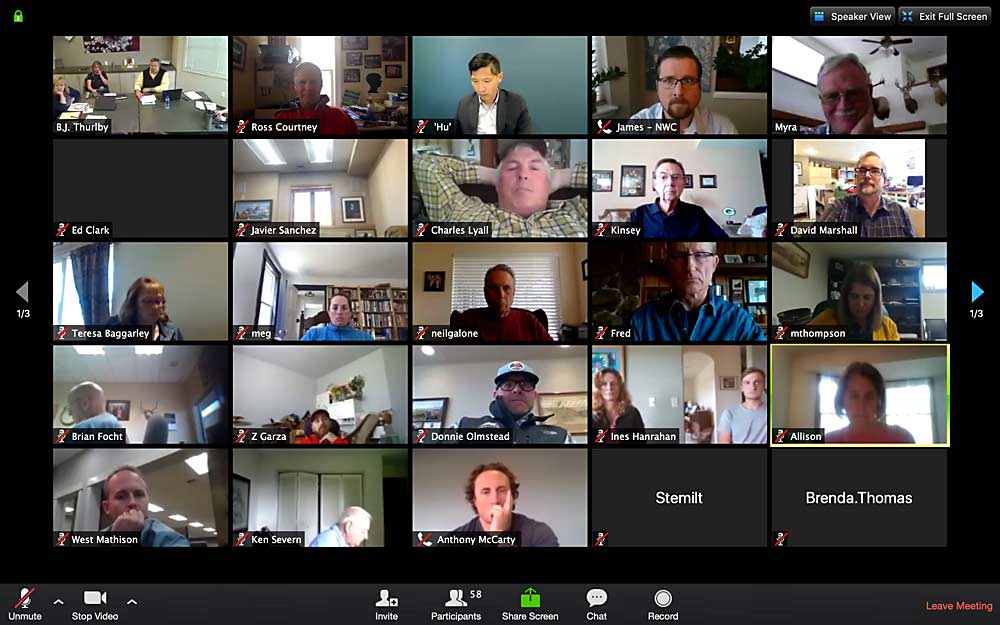
Convening over Zoom and conference calls today, Northwest sweet cherry producers predicted a 2020 crop of 20.15 million 20-pound box equivalents, or 201,500 tons, which is nearly identical to earlier predictions by an estimation team.
“Kind of where we thought we were,” said B.J. Thurlby, president of the Northwest Cherry Growers, which collectively promotes sweet cherries for growers in Washington, Oregon, Idaho, Utah and Montana.
An estimated 100 growers and industry representatives convened virtually for the annual 5-state meeting, due to the coronavirus pandemic. Normally, the group meets in Richland, Washington.
Based on pollination reports, growing degree days and conversations with major producers, Thurlby anticipated harvest to begin around May 24, with the first peak around June 22. Also, the crop should gradually progress geographically throughout the season, with little overlap between regions. That should ease pressure on sales desks, who won’t have to deal with gluts.
“This should help us with a more orderly harvest and a more orderly attack on the market,” Thurlby said.
Here’s a look at how the Northwest states estimate their harvests, by ton:
—Washington: 161,000
—Oregon: 39,300
—Idaho: 900
—Utah: 300
—Montana: Included in Washington’s tally
If predictions hold, the 2020 crop will be the smallest in five years, held in check by late frosts and some acreage removed due to the spread of little cherry disease.
Producers in California, who have begun harvest, expect about 5 million 18-pound box equivalents and call for little overlap with Northwest cherries this year, said Mike Taylor of Stemilt Growers, a Washington company with production in California.
The global coronavirus pandemic will create some marketing challenges, industry officials said, but also reasons for hope. Demand for strawberries and raspberries, which market similar to fresh cherries, were up strong for Easter this year; fruit sales in grocery store produce departments were up 17 percent in April, over the year before, Thurlby said.
Domestically, marketers need to create “impulse” demand for cherries as more people shop online, said James Michael, Northwest Cherry Growers vice president of marketing in North America. Michael is working with retailers to tout the seasonality of cherries. Walmart, for example, has agreed to give out small sample-sized bags to online shoppers later this spring, he said.
Export markets looked bleak about two months ago but have picked up, said Keith Hu, director of international operations for Northwest Cherry Growers. California cherries are reaching Asian ports with few problems, he said, while some are again allowing in-store demonstrations, a major promotion tool for the groups’ representatives in that part of the world. Meanwhile, Chinese tariffs on U.S. cherries are down to 25 percent, compared to 60 percent in 2018 and 2019.
Also, while passenger flights to and from Asia are only about 20 percent of normal, freight traffic is hopping at two or three flights a day out of the Northwest, Thurlby said.
In other business, the states also approved keeping the long-held assessment at $18 per ton.
—by Ross Courtney
Related:
—Initial estimate puts Northwest cherry crop at 20.5 million boxes






Leave A Comment